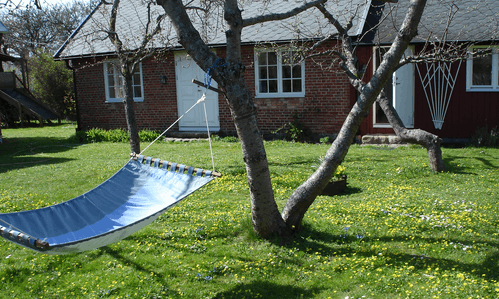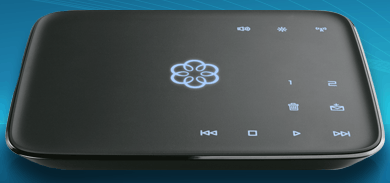
This post is adapted from one that first appeared in the San Jose Mercury News
by Larry Magid

A good friend of mine runs a small guesthouse called Ernsts Hus in Mölle, a seaside village in southern Sweden about two hours by train from Copenhagen.
The village has about 700 residents, plus assorted yachters from Denmark and other European countries who have boats tied up in the harbor. Though relatively remote, Molle is well connected. As is typical in Europe, cell phone service is better here than in most parts of the United States, and the local phone company provides pretty good broadband service.
Cell phone service may be good, but it’s not cheap. If I were to use my U.S. cell phone here, I’d be paying a $2.99 per minute roaming charge to call the United States. A cheaper alternative is to use an unlocked GSM phone and purchase a local SIM card. But I came up with even cheaper plan.

Before I left home, I packed up my Ooma Telo — an adapter about the size of a typical home Internet router that allows users to make and receive Voice Over Internet Protocol (VOIP) calls via their home broadband connection. Like other VOIP products, you can plug in a standard telephone or use Ooma’s optional cordless handset. The Telo can plug directly into a home router or connect via Wi-Fi with an optional adapter.
Instead of paying by the month as you do with most VOIP services, Ooma charges for its adapters and gives away the basic service. An Ooma Telo device, which costs $150, comes with free unlimited U.S. calling, caller-ID, call-waiting, and voice mail, although you do pay government fees and taxes, which vary by location but are typically below $4.00 a month.
Ooma also offers a premier plan for $9.99 a month that comes with a second line, 3-way calling, free calls to Canada and other services, including automatic forwarding of incoming calls to a backup number if your Internet service is down. One premier feature is Google Voice extensions, which means that if I make a call from my Ooma line, the person I call sees my Google Voice number instead of my Ooma number. The advantage is that when people call me back on my Google Voice number it simultaneously rings my Ooma phone, my cell phone and other numbers I’ve programmed in so I’m always reachable no matter where I am.
Even though I’m in Sweden, the Ooma adapter works just as if I were home, which means calls back to the United States continue to be free and people can call me using my regular number. I can even call landlines here in Sweden for about 2 cents a minute, which is a cheaper than using a Swedish cell phone to call within the country.
There are alternatives. Skype offers a service that lets you make free Skype-to-Skype calls or calls to regular phones in the United States for 2 cents a minute, or you can select from a variety of unlimited calling plans. Skype works on PCs and most smart phones and tablets, and you can avoid roaming charges if you connect your mobile device to the Internet via Wi-Fi. In addition to outgoing calls, you can pay $60 a year to get an incoming Skype number that allows people to reach you from any phone as long as your device is on with the Skype software running,
Google’s Gmail lets you make free outgoing calls and you can receive calls via Gmail if you have a Google Voice number (also free) but your PC must running with your browser set to Gmail.
For better or worse, I’m as reachable here in Sweden, as I am at home. The only problem is that most people don’t know I’m someplace that’s nine hours ahead of California so I have to remember to turn off the handset at bedtime to keep people waking me up in the middle of the night.
Be the first to comment